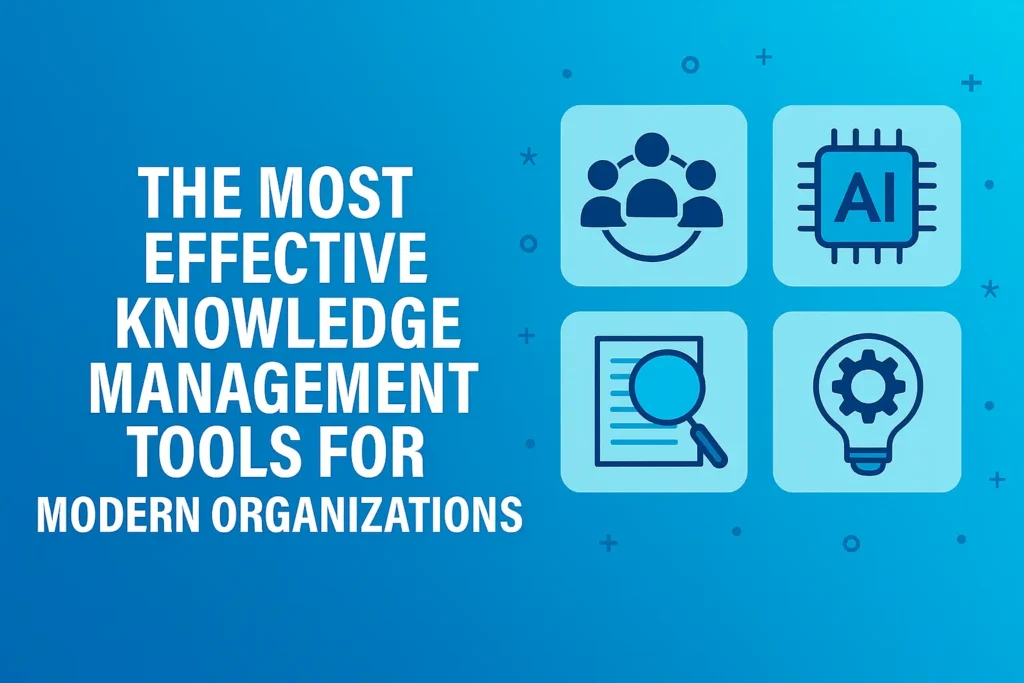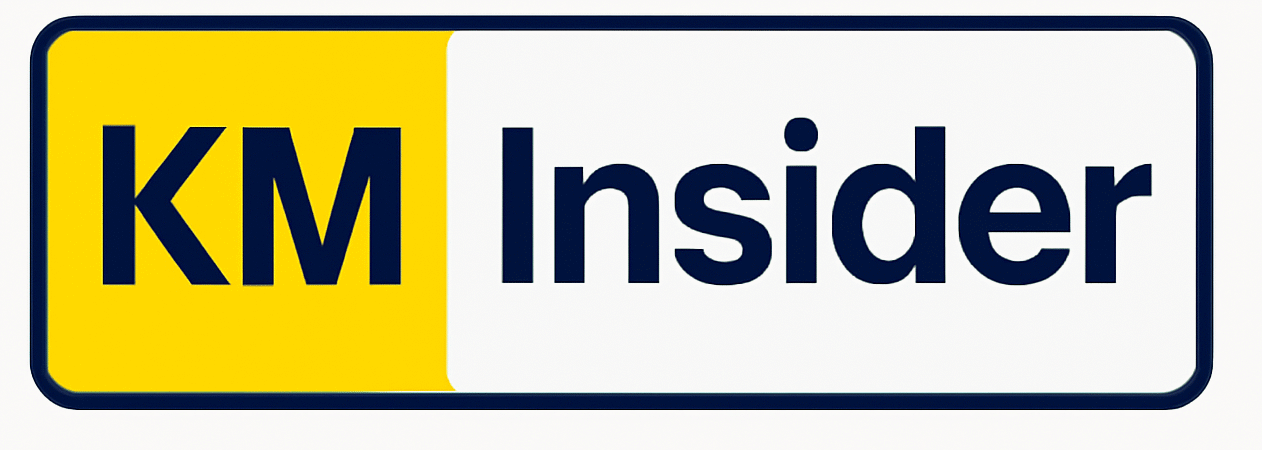Knowledge Management (KM) tools are pivotal for modern organizations aiming to harness their collective intelligence. These tools facilitate the efficient capture, organization, and dissemination of information, fostering a culture of collaboration and continuous learning. This article delves into the most effective KM tools available, highlighting their features, benefits, and alignment with contemporary organizational needs.

1. AI-Powered Knowledge Management Platforms
Artificial Intelligence (AI) has revolutionized the way organizations manage knowledge. AI-powered KM platforms leverage machine learning algorithms to automate content categorization, enhance search functionalities, and provide personalized knowledge recommendations.
Key Features:
- Automated Content Tagging: AI algorithms automatically categorize and tag content, reducing manual effort and ensuring consistent organization.
- Intelligent Search Capabilities: Advanced search functionalities that understand natural language queries, providing more accurate and relevant results.
- Personalized Recommendations: AI analyzes user behavior to suggest relevant content, fostering continuous learning and knowledge sharing.
Benefits:
- Increased Efficiency: Automation of routine tasks allows knowledge managers to focus on strategic initiatives.
- Enhanced User Experience: Personalized content delivery improves user engagement and satisfaction.
- Scalability: AI-driven platforms can handle large volumes of data, making them suitable for growing organizations.
Examples:
- Glean: An enterprise AI search startup that connects company applications and databases to provide advanced knowledge management solutions. Glean’s technology includes conversational AI and tools like OpenAI’s ChatGPT to create personalized summaries from internal data.
2. Collaborative Knowledge Sharing Tools
Collaboration is at the heart of effective knowledge management. Tools that facilitate seamless communication and collaboration among team members are essential for fostering a knowledge-sharing culture.
Key Features:
- Real-Time Collaboration: Enables multiple users to work on documents simultaneously, enhancing teamwork.
- Version Control: Tracks changes and maintains a history of document revisions, ensuring data integrity.
- Integrated Communication Channels: Combines chat, video conferencing, and file sharing in a single platform.
Benefits:
- Improved Productivity: Streamlined communication and collaboration reduce time spent searching for information and coordinating tasks.
- Enhanced Knowledge Sharing: Easy access to shared documents and discussions promotes the exchange of ideas and expertise.
- Better Decision-Making: Real-time collaboration allows for quicker feedback and more informed decisions.
Examples:
- Atlassian Rovo: A collaborative AI-driven tool designed to enhance productivity by improving data search across various platforms and tools. Rovo adds specialized agents to workflows to handle time-consuming tasks, complete projects, and help solve complex problems.
3. Knowledge Base Software
A well-organized knowledge base serves as a centralized repository for information, making it easily accessible to employees and customers alike.
Key Features:
- Searchable Content: Allows users to quickly find information using keywords or topics.
- Content Categorization: Organizes information into logical categories for easy navigation.
- Self-Service Capabilities: Empowers users to find solutions independently, reducing the burden on support teams.
Benefits:
- Reduced Support Costs: A comprehensive knowledge base can decrease the number of support tickets by enabling users to resolve issues independently.
- Consistency: Ensures that all users have access to the same information, promoting uniformity in responses and actions.
- Continuous Improvement: Regular updates and additions to the knowledge base keep information current and relevant.
Examples:
- Zendesk: Offers a suite of tools for creating and managing knowledge bases, including features for content creation, search optimization, and analytics.
4. Document Management Systems
Effective document management is crucial for maintaining organized and accessible records within an organization.
Key Features:
- Centralized Storage: Stores documents in a single location, making them easy to access and manage.
- Access Controls: Restricts document access based on user roles and permissions, ensuring data security.
- Audit Trails: Tracks document changes and access history, providing accountability.
Benefits:
- Enhanced Security: Protects sensitive information through controlled access and encryption.
- Improved Compliance: Facilitates adherence to regulatory requirements by maintaining accurate records.
- Streamlined Workflows: Simplifies document retrieval and sharing, improving operational efficiency.
Examples:
- Document360: A knowledge base software that allows organizations to create and manage internal and external knowledge bases, with features for version control, access management, and analytics.
5. Learning Management Systems (LMS)
LMS platforms are designed to deliver, track, and manage training and educational content within an organization.
Key Features:
- Course Creation Tools: Enables the development of custom training programs and materials.
- Progress Tracking: Monitors learner progress and performance, providing insights into training effectiveness.
- Certification Management: Issues certificates upon course completion, recognizing employee achievements.
Benefits:
- Skill Development: Facilitates continuous learning and professional development among employees.
- Standardization: Ensures consistent training across the organization, aligning with company objectives.
- Employee Engagement: Interactive and engaging learning experiences can increase employee motivation and retention.
Examples:
- Powell Software: Provides a suite of tools to boost efficiency, share expertise, and support collaboration in organizations, including features for creating and managing training content.
Conclusion
The landscape of knowledge management is rapidly evolving, with a diverse array of tools available to meet the unique needs of modern organizations. By leveraging AI-powered platforms, collaborative tools, knowledge base software, document management systems, and learning management systems, organizations can enhance their knowledge management practices, driving efficiency, innovation, and growth.
Selecting the right KM tools requires a thorough understanding of organizational needs, technological capabilities, and strategic objectives. By carefully evaluating and implementing these tools, organizations can build a robust knowledge management framework that supports their long-term success.
